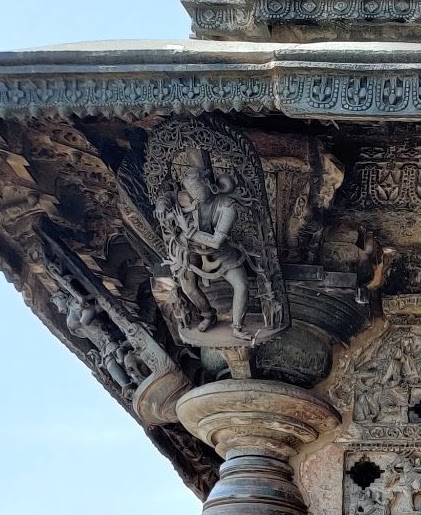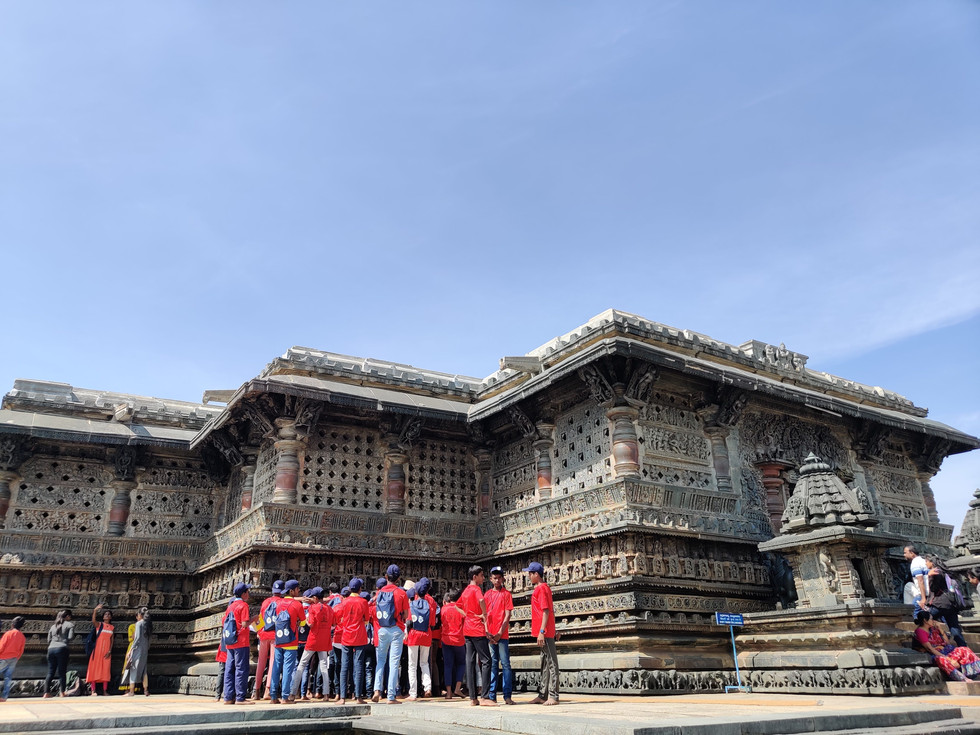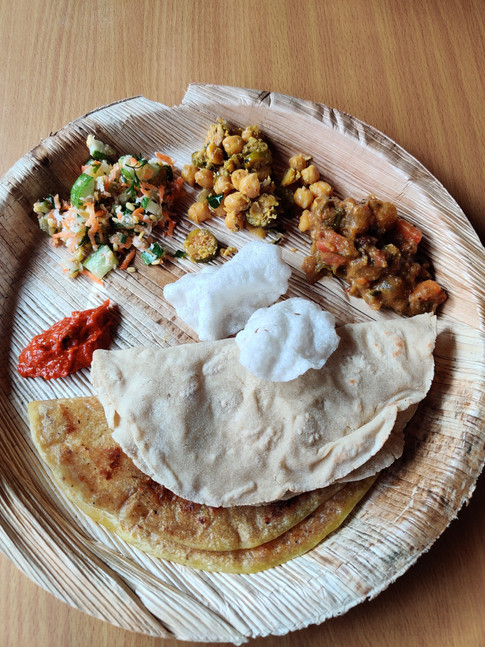The Hoysala Masterpieces: Temples of Belur and Halebidu
- Sai Venkatesh Vemuri
- Jan 28, 2024
- 5 min read
Updated: Nov 12, 2024
The two ancient and historic temples in Belur and Halebidu represent the brilliant and astonishing craftsmanship of Hoysala Architecture.

Table of Contents
Belur and Halebidu, situated in Karnataka's Hassan district, bear witness to the historical tapestry woven by the Hoysala Empire from the 10th to the 14th centuries. The period is remembered for development of art and architecture. Amidst the temples that once flourished during this era, the Chennakeshava Temple in Belur and the Hoysaleswara Temple in Halebidu have weathered the years, standing as resilient reminders of a rich heritage.

Chennakeshava Temple, Belur
Temple History and Construction
The construction of the Chennakeshava Temple commenced in 1117 AD during the rule of King Vishnuvardhana. The temple was built to honor Lord Vishnu in the form of Chennakeshava, meaning 'handsome Keshava'. The temple was built over the course of 103 years, spanning three generations. The main gopuram at the entrance is a later addition during the Vijayanagara period.

Doorway and Carvings
One of the first things you notice is the doorway adorned with meticulous carvings on all sides. At the top of the doorway, Garuda is at the centre, accompanied with mythical creatures on each side, while the Dasaavathara of Vishnu unflods in the carvings above. The remaining space is a canvas for stunning and intricate patterns, ensuring that every inch of the doorway is a masterpiece of craftsmanship.
Pillars and Details
Inside the temple, the pillars take centre stage, showcasing geometric patterns and meticulous details. Each pillar stands as a unique piece of art, and as you traverse the temple, you'll find that no two pillars are identical, except for the four central ones. The most important one here is the Narasimha Pillar which consists of numerous miniature sculptures. While it was initially known to rotate freely on its axis, restrictions have been imposed due to damages incurred during such operations.
Ceiling and Stories
The ceiling comprises several layers of concentric circles, adorned with carvings that narrate stories from the Ramayana and other epics. At the center, a prominent carving depicts Narasimha, the avatar of Lord Vishnu.
Mohini Sculpture
Mohini, Vishnu's enchanting female avatar, graces the temple as one of its most celebrated sculptures. In Hindu mythology, she personifies ultimate beauty. This sculpture is a portrayal of what is deemed to be the ideal, well-proportioned female physique.
Mandanika Bracket Figures
Mandanika bracket figures adorn both interior and exterior of the temple and is one of the unique features of the temple. There are about forty of them and these female damsels are carved to an incredible detail and, portraying myriad of moods and engaging in various activities.
Exterior Wall Carvings
On the exterior walls one can see several bands of carvings that encircle the temple platform. These contain animals such as elephants, lions, and horses, interwoven with beautiful patterns and narratives from epics like the Ramayana and more.

Main Shrine
The main shrine of the deity lies on a star shaped platform and one can see perforated stone walls that act as light screens towards the east and solid walls with numerous carvings on other sides.
Other Structures in Temple Premises
The other important structures inside the temple premises include Kappe Chennigraya Temple, Somanayaki Temple, Andal Temple, and the Pushkarni.
Hoysaleswara Temple, Halebidu
Temple History and Construction
Located approximately 15 kilometers from Belur, the Hoysaleswara Temple in Halebidu was built around the same period as the Chennakeshava Temple, spanning a construction period of about 40 years. The temple is dedicated to Lord Shiva.
While the interior beauty of the Chennakeshava Temple in Belur is renowned, the Hoysaleswara Temple stands out for captivating external beauty.

Interior Ceiling Decorations
There are a total of three ceiling decorations within the temple, with one featuring Dikpalakas—the guardians of the eight cardinal directions: Kubera (North), Yama (South), Indra (East), Varuna (West), Ishana (Northeast), Agni (Southeast), Vayu (Northwest), and Nirrta (Southwest).
Noteworthy Sculptures
It's often remarked that the temple is best compared to jewels rather than other temples, and rightly so. Adorned with numerous breathtaking sculptures, here are some of the noteworthy ones.




Main Shrine and Outer Wall Artwork
Resting on a double-star platform, the Hoysaleswara Temple encompasses two shrines—Hoysaleswara (honoring the King) and Shantaleswara (honoring the Queen). The outer walls surrounding the temple showcase detailed artwork featuring elephants symbolizing strength, lions depicting courage, and horses embodying agility, alongside an array of other captivating carvings.






Nandi Mandapas and Sculptures
Next to the temple, two Mandapas house Nandi sculptures, and one of them has a shrine dedicated to Surya, the sun god. These Nandis stand as some of the largest in Indian temples. The Nandi facing the Shataleshwara linga stands out with intricate decoration and polish, while the one facing the Hoysaleswara linga appears more rugged.
I'm yet to encounter a temple with such intricate carvings. The skill and attention to detail will make it seem like it's made out of clay and not stone. One of the noteworthy examples is a delicately carved free-moving bangle into the sculpture.
Please note that both the temples are still active. I intend to revisit these magnificent temples at a later time with a quieter atmosphere (read as fewer crowds) and less intense sun.

One of the last things I loved about this trip was the traditional Karnataka-style lunch at Itihakala Restaurant in Halebidu.
And that wraps up this journey! Be sure to explore more stories on this blog. I'd love to hear from you, so feel free to connect through the contact section.
Essential Information
Who should visit?
Weekender
Budget Explorer
Spiritual Seeker
Architecture Buff
When to visit?
October to February
Where to Stay?
Hotel Mayura by KSTDC, Goverment of Karnataka
What to do?
Explore Temples
Chennakeshava Temple
Hoysaleswara Temple
Kedareshwara Temple
Jain Temple
Visit Yagachi Dam
How to travel?
Nearest Major City:
Bengaluru ~200kms
Mysuru ~150kms
Hassan ~ 40kms
There are multiple options to reach Hassan and bus can taken further to reach Belur
KSRTC has packaged tours from Bengaluru
Recommended Trip Duration
2 Days / 1 Night*
Estimated Trip Budget
~INR 5,000 per Person*
* Excluding transportation costs via flight or train, and if you'll be traveling around via public transport or in a group of four using a car.
_PNG.png)



























































Comments